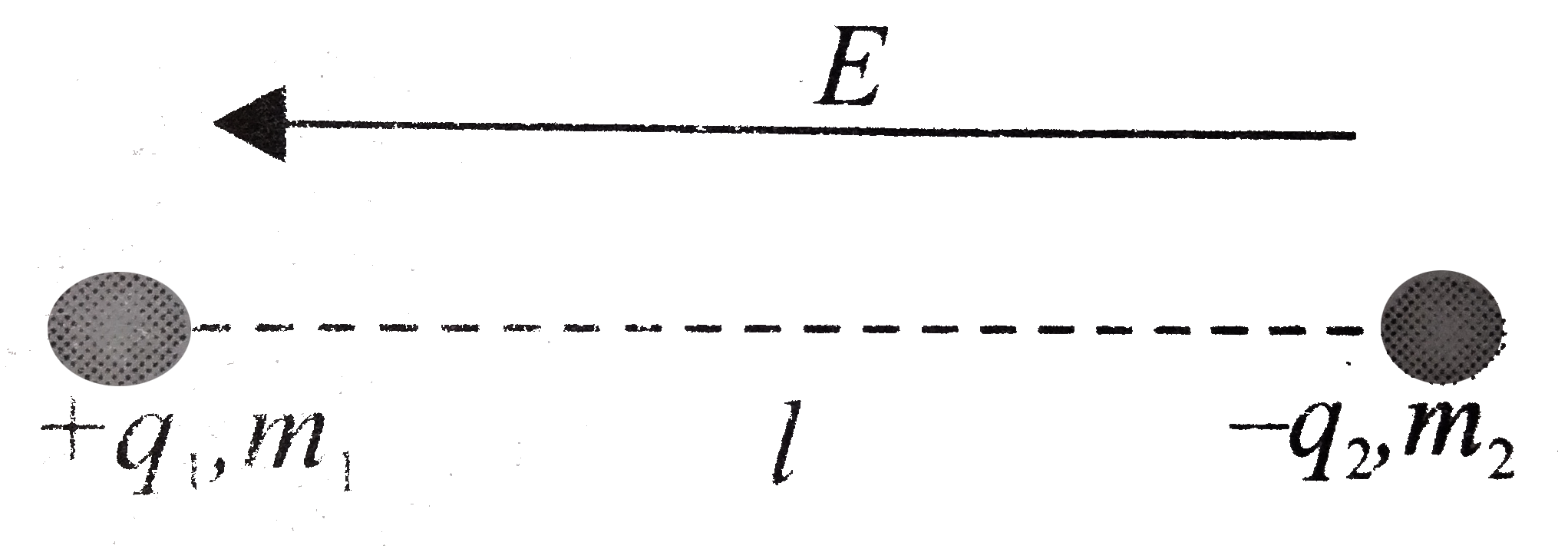A practical application of electrical interaction of solids . For example, florida phosphate ore, consisting of small particles of quartz and phosphate rock, can be separated into component by applying a uniform electric field as in figure.

Assuming zero initial velocity and displacement, determine the separation between the particles after fall g = 80 cm. Take E = 0.5 MV/m and specific charge for both positive and negative charge particle 9μC/kg.
The correct Answer is:73.4 cm
Step by step video & image solution for A practical application of electrical interaction of solids . For example, florida phosphate ore, consisting of small particles of quartz and phosphate rock, can be separated into component by applying a uniform electric field as in figure. Assuming zero initial velocity and displacement, determine the separation between the particles after fall g = 80 cm. Take E = 0.5 MV //m and specific charge for both positive and negative charge particle 9 mu C //kg. by Physics experts to help you in doubts & scoring excellent marks in Class 12 exams.
Topper's Solved these Questions
- BOOK - AAKASH INSTITUTE ENGLISHCHAPTER - ELECTRIC CHARGES AND FIELDS EXERCISE - comprehension3videos
ELECTRIC CHARGES AND FIELDS
- BOOK - AAKASH INSTITUTE ENGLISHCHAPTER - ELECTRIC CHARGES AND FIELDS EXERCISE - SECTION-I(SUBJECTIVE TYPE QUESTIONS)2videos
ELECTRIC CHARGES AND FIELDS
- BOOK - AAKASH INSTITUTE ENGLISHCHAPTER - DUAL NATURE OF RADIATION AND MATTER EXERCISE - ASSIGNMENT (SECTION-D)10videos
DUAL NATURE OF RADIATION AND MATTER
- BOOK - AAKASH INSTITUTE ENGLISHCHAPTER - ELECTROMAGNETIC INDUCTIONEXERCISE - ASSIGNMENT(SECTION -D) Assertion-Reason type Question)15videos
ELECTROMAGNETIC INDUCTION
Similar Questions
The acceleration of a charged particle in a uniform electric field is
View SolutionTwo particles of chargaes and masses (+q1,m1) and (+q2,m2) are reelaesed at two different points in a uniform electric field E established in free space. If their separation remains unchanged find the separation l between them .
 View Solution
View SolutionA particle of mass .m. and charge q is placed at rest in a uniform electric field E and then released. The K.E. attained by the particle after moving a distance y is
View SolutionA particle of mass m and charge q is placed at rest in a uniform electric field E and then released, the kinetic energy attained by the particle after moving a distance y will be
View SolutionThe path of a charged particle projected into a uniform transverse electric field is
View SolutionA particle of mass m and charge q is released from rest in uniform electric field of intensity E. Calculate the kinetic energy it attains after moving a distance y between the plates.
View SolutionA particle moves in a region having a uniform magnetic field and a parallel, uniform electric field. At some instant, the velocity of the particle is perpendicular to the field direction. The path of the particle will be
View Solutionthe figure shows the path of A positively charged particle through a rectangular region of uniform electric field as shown in the figure. the direction of deflection of particle 2, 3 and 4 is
 View Solution
View SolutionIs there any lower limit to the electric force between two
. particles placed at a separation of 1 cm?View SolutionA charge q is placed in an uniform electric field E. If it is released, then the K.E of the charge after travelling distance y will be :
View Solution

